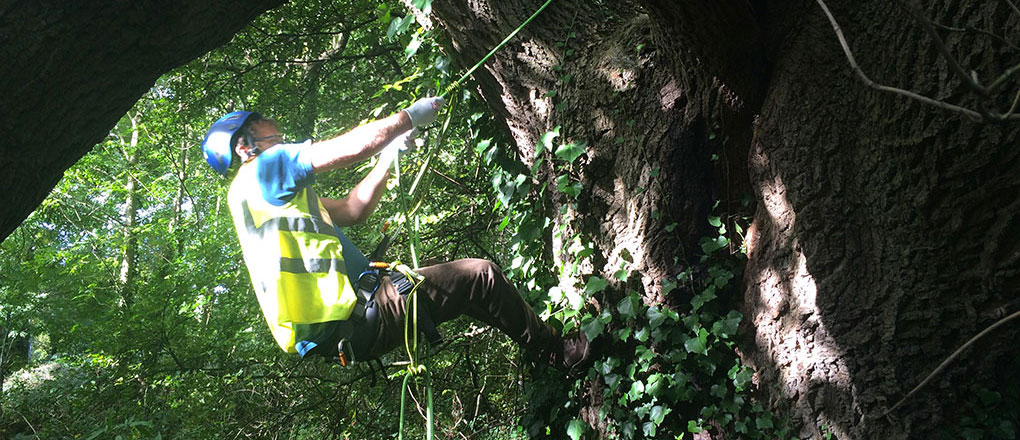
Climb and Inspect Surveys
Within Quants, we have experienced staff with Natural England Bat Survey Licences and NPTC CS38 Tree Climbing and Aerial Rescue certificates, and can undertake tree climb and inspect surveys for bats throughout Yorkshire and the north of England.
Around three quarters of British bat species are known to roost in trees. The remaining species tend to favour human-made structures due to a lack of suitable and available tree habitat.
Trees such as oak, beech and ash are particularly suitable for bats, but any tree has potential for a bat roost – especially if it has cavities in the trunk or branches, woodpecker holes, loose bark, cracks, splits and a covering of thick ivy.
Climb and Inspect – Aerial Tree Surveys
Standard methods of assessing trees for bats are inspections from ground-level, followed by surveys of bat activity at dawn and dusk. However, being able to climb the tree means a more accurate assessment of actual evidence of bats or of the features that have potential for bats. This likely avoids or reduces the need for more labour-intensive bat activity surveys, meaning an overall cost reduction for the client with no loss of high-quality survey data. Additionally, aerial tree surveys can be undertaken at any time of year and can substantially reduce waiting times and survey effort.
Initial surveys are undertaken from the ground. Any trees identified as high potential for bats are followed by an aerial tree survey and endoscopic examination, inspecting the internal conditions of the tree, its features and any bats that might be roosting in it.
